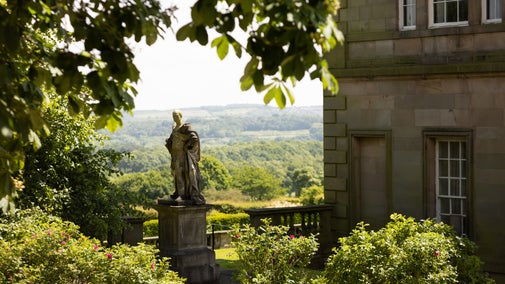Who was Lady Mary Wortley Montagu?
- Expert curated

Jump to
Born in 1689, Lady Mary Wortley Montagu (née Pierrepont) was an English aristocrat and lady of letters. More important than her literary achievements, however, Lady Montagu was responsible for the introduction of the smallpox inoculation to Britain and Western Europe. This medical breakthrough which she promoted widely, and was later superseded by Edward Jenner's vaccination, was the first time in Western medicine that antibodies were created to secure immunity from disease.
Lady Mary’s early years
Born in London, Lady Mary Pierrepont was raised in grand style in houses belonging to her family. From an early age she was keen to receive a better education than was thought appropriate for girls of her time, and social class. Writing later in life, Lady Mary describes visiting her family’s library to ‘steal’ her education, away from the gaze of a despised governess.
By the time she was 16 she had written two volumes of poetry, a short novel, and taught herself Latin.
Family success… and tragedy
Aged 23, Lady Mary eloped to marry Edward Wortley Montagu, and they moved to London. A popular socialite, she was soon to be found at each of the two separate and mutually hostile courts of King George I and the future George II.
At this time, her only brother died from smallpox, aged 20. Lady Mary also contracted the disease in 1715 but recovered against expectations. In 1716 her husband was appointed Ambassador to the Ottoman empire and they moved to Constantinople, now known as Istanbul.
Insights from the Ottoman capital
Living in Constantinople, Lady Mary had access to harems, the part of a household reserved for use as women’s living quarters.
Comparing Turkish women to her experience of life in England she wrote: ‘Turkish Ladys [sic] don’t commit one sin the less for not being Christians ... 'Tis very easy to see they have more Liberty than we have …’.
With her own family afflicted by smallpox, Lady Mary was pleased to discover inoculation against smallpox was widespread in the Ottoman empire. The method was to introduce the smallpox virus to an uninfected person, thereby providing immunity from the disease.
Lady Mary’s Legacy
Lady Mary had the British Embassy’s surgeon inoculate her young son. Back home in 1721, while a smallpox epidemic was taking the lives of people around the world, she had him inoculate her daughter, who was born in Turkey, and publicised the benefits of inoculation. Her efforts were met with bitter hostility, including physical violence.
Opponents of the procedure derided it as oriental, irreligious, and a fad of ignorant women, making Lady Mary's fame at the time both mixed and short-lived.
Although only published after her lifetime, her Embassy Letters remain an important source for historians of the period.

A monument to Lady Mary
An obelisk erected in Wentworth Castle Gardens by Thomas Wentworth was later rededicated by his son William in honour of her efforts to inoculate children against smallpox. A symbol of Mary’s achievements, it is believed to be the oldest monument in the country dedicated to a non-royal woman.
About the author
Eamonn Gearon is an author and historian at the University of Oxford, specialising in the Middle East from the dawn of Islam to the present day. His current research focuses on military intelligence in the Middle East during the First World War, and his work also explores the influence of the Middle East on Britain over the past 1,400 years.
Our partners

A hub for multi-disciplinary research projects and research engagement at the University of Oxford
You might also be interested in
What are Trusted Source articles?
Find out more about our Trusted Source articles, which were created in partnership with the University of Oxford, and explore topics related to the special places in our care.

The history of Wentworth Castle Gardens
Wentworth Castle Gardens, near Barnsley, was shaped in the early 18th century by Thomas Wentworth, 1st Earl of Strafford. His vision was refined by later generations who added to the grand house, gardens and parkland. After the Second World War, the house found a new purpose as an adult education college. The gardens and parkland were left to decay until the start of the 21st century, when a new heritage trust restored and opened the parkland.

People
From landscape gardeners to LGBTQ+ campaigners and suffragettes to famous writers, many people have had their impact on the places we care for. Discover their stories and the lasting legacies they’ve left behind.
